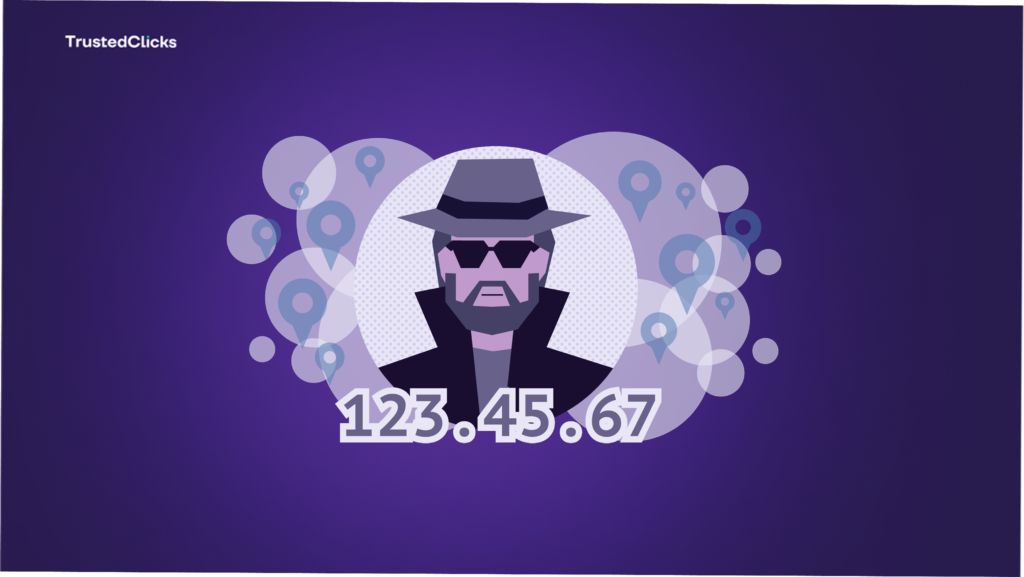- Website security
Beyond the Click: How IP Tracking Unmasks Fraudulent Traffic


In digital advertising, every click is a valuable metric that marketers and businesses rely on to measure the success of their campaigns. However, not all clicks are created equal. A significant portion of online traffic is fraudulent, driven by bots, click farms, and malicious actors attempting to deceive advertisers and distort campaign performance metrics. One of the most effective tools in combating this fraudulent activity is IP tracking. By analyzing IP addresses, businesses can distinguish between genuine users and fraudulent traffic, thereby safeguarding their advertising budgets and ensuring accurate data-driven decisions.
Fraudulent Traffic
Fraudulent traffic encompasses any artificial activity that inflates website visits, ad impressions, or conversions without any legitimate user engagement. This type of traffic can originate from various sources, including:
Bot Traffic
Automated scripts designed to mimic human interactions, generating clicks, views, and fake engagement on ads or websites.
Click Farms
Groups of individuals manually clicking on ads or engaging with content to inflate metrics.
Proxy and VPN Abuse
Fraudsters use proxy servers and VPNs to mask their real locations, making it difficult to track their origins.
Competitor Click Fraud
Rivals may click on a company’s paid ads to deplete their advertising budget and skew analytics.
Fraudulent traffic not only wastes marketing budgets but also distorts conversion rates, misleading businesses about campaign effectiveness and impacting strategic decisions.
The Role of IP Tracking in Identifying Fraudulent Traffic

IP tracking is a method that involves monitoring and analyzing the IP addresses of visitors to a website or advertisement. Every device connected to the internet has a unique IP address that reveals crucial details such as geographical location, ISP (Internet Service Provider), and network type. By leveraging IP tracking, businesses can detect anomalies in traffic patterns and uncover fraudulent activity.
How IP Tracking Works
Identifying Repeated Clicks from the Same IP
If an ad receives an unusually high number of clicks from a single IP address, it could indicate click fraud or bot activity.
Geolocation Analysis
IP tracking enables businesses to determine the geographical origins of visitors. Suspicious traffic originating from locations irrelevant to the campaign’s target audience could indicate fraud.
Detecting Data Center and Proxy Usage
Fraudsters often use cloud data centers and proxy servers to generate fake traffic. IP tracking tools can flag IP addresses associated with these sources, helping advertisers filter out illegitimate users.
Monitoring Unusual Behavioral Patterns
If multiple clicks or engagements occur within an unrealistically short timeframe, it suggests non-human interaction, which IP tracking can help detect.
How Businesses Can Implement IP Tracking to Reduce Fraudulent Traffic
1. Set Up IP Tracking in Analytics Tools
Businesses can configure tools like Google Analytics or specialized fraud detection software to monitor incoming IP addresses and flag suspicious activity.
2. Blacklist Malicious IP Addresses
If an IP address is found engaging in fraudulent activities, it can be blacklisted to prevent further interactions with ads or websites.
3. Use CAPTCHAs and Verification Methods
To differentiate bots from human users, businesses can implement CAPTCHAs, email verifications, and two-factor authentication.
4. Monitor Traffic Trends Over Time
Consistently analyzing traffic sources and behavior helps identify unusual spikes in activity that may indicate fraudulent interference.
5. Leverage AI and Machine Learning
Advanced fraud detection systems use machine learning algorithms to analyze vast amounts of data and detect emerging patterns of fraud.
IP Tracking in Fraud Prevention
As digital fraud tactics evolve, so too must the methodologies used to combat them. The future of IP tracking in fraud prevention is likely to see enhancements such as:
AI-Driven Anomaly Detection: More sophisticated algorithms will provide real-time fraud detection based on complex behavioral patterns.
Blockchain-Based Verification: Decentralized verification systems could offer increased transparency in tracking online identities.
Stronger Regulations: Governments and regulatory bodies may introduce stricter laws to combat ad fraud and protect businesses.
Frequently Asked Questions About Best Ticket Scalping Sites
Is it Legal to Scalping Tickets?
Ticket scalping is legal in many places, but some regions have strict regulations regarding how much tickets can be resold for or how they can be resold. Always check your local laws before participating in ticket scalping.
Where Can I Buy Scalped Tickets?
You can buy scalped tickets on several trusted platforms, including StubHub, SeatGeek, Vivid Seats, and TickPick. These platforms offer buyer protection to ensure the tickets you purchase are legitimate.
Can I Get Scammed Buying Scalped Tickets?
You can buy scalped tickets on several trusted platforms, including StubHub, SeatGeek, Vivid Seats, and TickPick. These platforms offer buyer protection to ensure the tickets you purchase are legitimate.
Why Are Scalped Tickets So Expensive?
Scalped tickets are usually more expensive because they are sold at a premium, especially for high-demand events. Scalpers take advantage of the limited supply and high demand to charge higher prices.
Conclusion
In an era where digital marketing plays a crucial role in business growth, fraudulent traffic poses a serious threat to advertising integrity and financial stability. IP tracking serves as a powerful tool in identifying and mitigating fraudulent activity, ensuring that businesses receive genuine engagement from real users. By leveraging IP tracking technology, implementing best practices, and using advanced fraud detection tools, organizations can safeguard their advertising budgets, enhance data accuracy, and maintain the credibility of their digital campaigns.
Beyond just tracking clicks, businesses must remain vigilant and proactive in fighting fraudulent traffic to thrive in an increasingly digital world.
Table of Contents
Join our community!
Subscribe to our newsletter for the latest updates, exclusive content, and more. Don’t miss out—sign up today!
Recent Posts

Scaling Bot Detection: How to Protect Large-Scale Websites and Applications
- 7 mins read

IP Spoofing Unmasked: The Silent Danger in Your Digital Traffic
- 7 mins read

The Role of IP Geolocation in E-commerce and International Marketing
- 7 mins read



